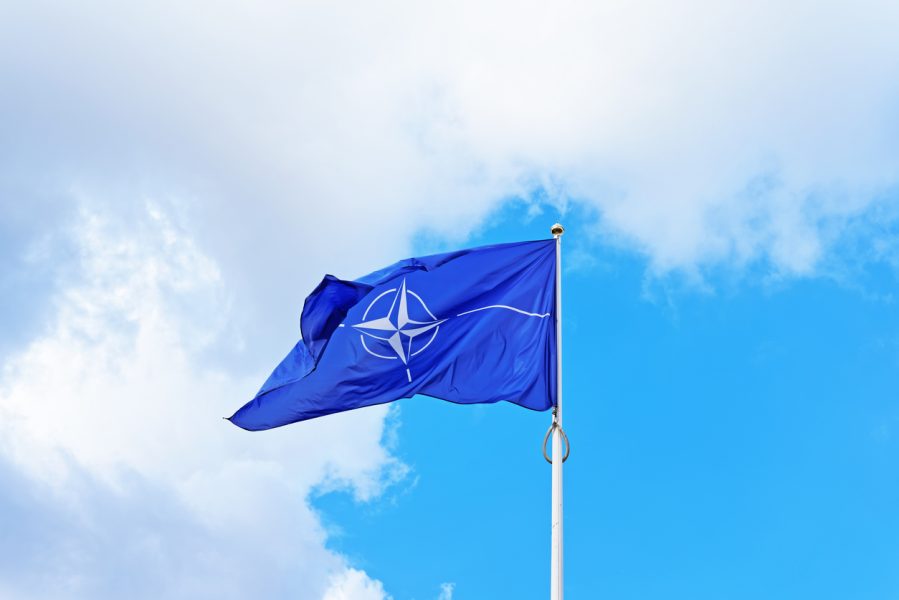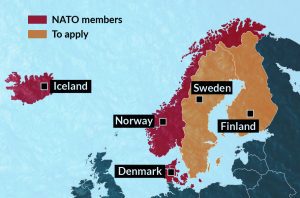
Neutral for decades, Finland, Sweden want NATO membership now; here's why
The Russian invasion of Ukraine has pushed both the countries to end their military neutrality and apply for a NATO membership

Marking the beginning of a new era and ending decades of military neutrality, Sweden and Finland, alarmed by Russia’s invasion of Ukraine, are all set to apply for membership in the North Atlantic Treaty Organisation (NATO) defence bloc.
Finland’s President Sauli Niinisto, during a joint address with Prime Minister Sanna Marin in Helsinki on Sunday, said the Finnish Parliament is working on approving a formal decision in this regard. An application would be submitted at the NATO headquarters in Brussels soon.
“I, or Finland, are not known to sneak around and quietly disappear behind a corner,” Niinisto said.
Reports say, while support for a NATO membership was limited to 20 to 30 per cent in Finland over the years, it has gone past 70 per cent following the February 24 invasion of Ukraine.
Also read: Whatever has happened to the war in Ukraine? Why is it not ending
Later that evening, Sweden’s ruling party confirmed the plan to join the North Atlantic military alliance.
In a statement, Social Democrats said that they have the complete support of the public and most of the opposition party in their decision and that a formal application would be made within days. They, however, clarified that they were opposed to stationing nuclear weapons or hosting NATO bases.

The government will officially confirm the decision once it is discussed in the Swedish parliament and has full endorsement of the cabinet.
“Taking a stance for NATO membership means that we are ready to abandon a security policy line that Sweden has kept, in various forms, for 200 years,” Swedish Prime Minister Magdalena Andersson said in a press conference in Stockholm.
“For us Social Democrats, it is clear that the military non-alignment has served Sweden well, but our conclusion is that it won’t serve us as well in the future,” she said, asserting that the NATO membership is best for Sweden and its people.
A grave mistake, says Russia
The decision would drastically alter the security map of Europe, giving NATO more control of the Baltic Sea.
Russia has called the decisions by the two Nordic nations “a grave mistake,” threatening them of “grave consequences.” “The general level of military tensions will increase,” Russia’s Foreign Minister Sergei Ryabkov was quoted as saying. “It is a pity that common sense is being sacrificed for some phantom ideas about what should be done in the current situation,” he said.
Stating that a NATO alliance will not strengthen the security of Finland and Sweden, Ryabkov said two countries “should have no illusions that we will just put up with this.”
Some NATO members are concerned that Russia may deploy nuclear weapons or hypersonic missiles at the Kaliningrad enclave, across the Baltic Sea as a retaliatory measure.
Amid anticipation of retaliation from Russia, Sweden has sought reassurances from the US to shore up its security in the event of such an attack. Britain has already made a pledge to come to the aid of the Nordic nations if Russia attacks.
‘Boost to Nordic flank of NATO’
The decision by the Nordic countries has received widespread support of foreign ministers of other NATO countries including Norway and US among even though there has been concerns over Turkey’s possible opposition to the membership bids as it accuses Sweden and Finland of supporting ‘Kurdish Terrorists’.
It needs the nod of all 30 NATO Allies for new members to join.
Also read: How far will Putin go in Ukraine? Georgia may hold the answers
Welcoming the decision, NATO’s General Secretary Stoltenberg on Sunday said the Finish membership will strengthen the Nordic flank of the military alliance, adding that he was confident that the accession process for Finland and Sweden could be expedited.
“In the meantime, the alliance would increase its presence in the Baltic region to deter Russian threats,” Stoltenberg, who is recovering from COVID, said via video link while addressing a NATO meeting in Berlin. “All allies realize the historic magnitude of the moment…Sweden and Finland, if you’re ready, we’re ready,” she said.
The decision comes at a time when Russia has accused NATO of fighting a proxy war with it by helping Ukraine.
Stoltenberg on Sunday expressed confidence that Kyiv could win the war against Moscow while stating that the military bloc would keep sending help to the country.
What kept Finland, Sweden away?
Both Sweden and Finland had maintained a neutral stance on joining a military alliance in a bid to not rile up Russia.
Finland was particularly wary as it shares a 1,300 km (810 mile) border with Russia, and has a stormy history with the next-door neighbour.
While the country, which was ruled by Soviet Union for more than a century, gained its independence in 1917, its Army had fought Soviet forces twice in the Second World War, only to lose 10 per cent of Finnish territory.
It was the Finno-Soviet Treaty of 1948 which finally helped the country expand its independence and get rid of the shadow of Soviet Union. In return, it promised to act as a barrier for the Soviet Union from attacks from western or Allied powers. In the process, Finland was alienated from Western Europe and kept itself neutral of defence collaborations.
Sweden, on the other hand, had been opposed to NATO membership, as it had believed in multilateral dialogue and nuclear disarmament after the Cold War.
Analysts say, even though it reintroduced conscription and pumped more money into the defence front, after the Russian annexation of Crimea in 2014, it has been reportedly skeptical of the US-led NATO’s agenda and believed that its induction would only increase friction in the region.
What NATO membership entails
NATO was established in 1949 with the inking of the Washington Treaty to “safeguard” the freedom and security of its members through political and military means. It was formed in the midst of the Soviet threat to the continent. The erstwhile Soviet Union along with its allies later founded a rival alliance known as the Warsaw Pact, in 1955.
At present, 30 countries from North America and Europe are part of NATO.
Under Article 5 of the Washington Treaty, an attack against a NATO member of Ally will be considered an attack against all.
Also read: Loss of US’s moral standing, Ukraine’s delusion prevent end to conflict
With Nordic countries such as Denmark, Norway and Iceland already on board, Finland and Sweden’s entry into NATO, would strengthen the Nordic control of the Baltic Sea, which is Russia’s sea entrance to St Petersburg and Kaliningrad enclave.
Experts say Finland and Sweden’s membership would help NATO join forces with the Nordic Defence Cooperation (of which Denmark, Finland, Iceland, Norway and Sweden are members) to make the Baltic region easier to defend from Russia, which projects its military might from as far as the Kola Peninsula in the Arctic region.
Both the countries already meet most of the requirements to be NATO members. This includes having a functioning democratic political system based on a market economy, fair treatment of minority populations, committing to resolve conflicts peacefully, ability and willingness to make military contributions to NATO operations and committing to democratic civil-military relations and institutions among others.
It, however, may take months before Finland and Sweden get their NATO membership sealed as the Parliaments of Allies’ would be required to ratify their membership bids before the applicants enjoy the defence commitments under Article 5 of the Washington Treaty.


